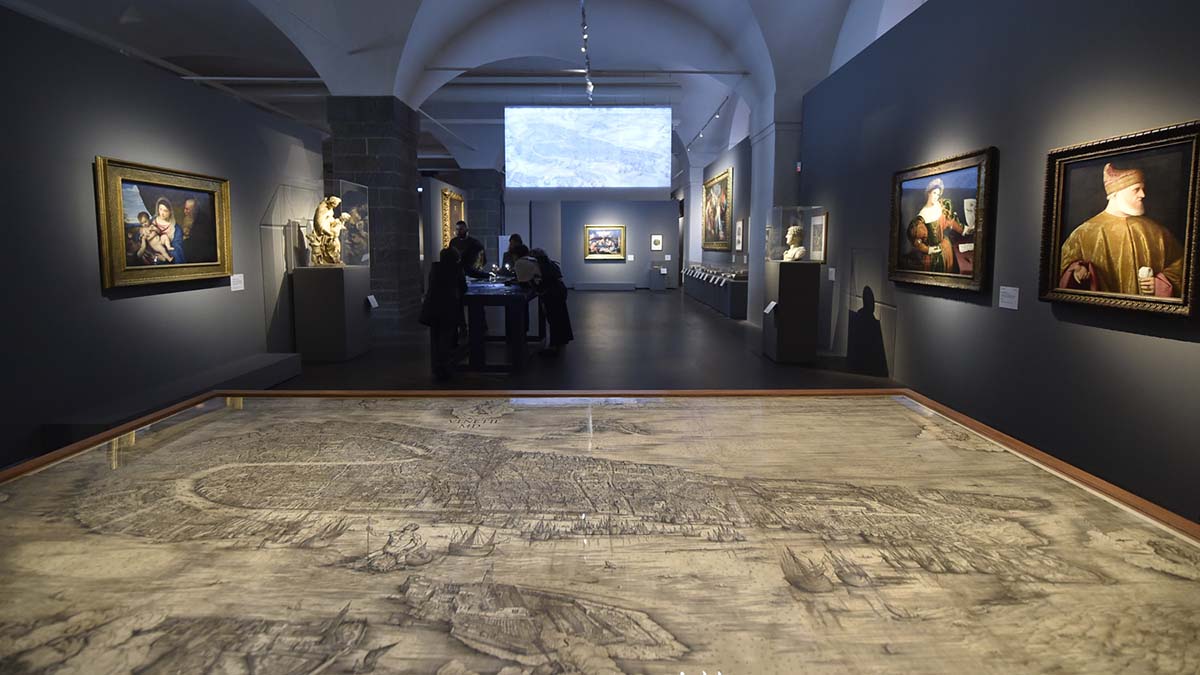Florence, Uffizi Gallery: exhibition “Pietro Aretino and Art of the Renaissance”

The Uffizi’s Aula Magliabechiana hosts the first exhibition ever devoted to this multi-faceted 16th century thinker, with over 100 exhibits ranging from paintings and sculptures to written works and precious objects.
Poet, playwright, scathing wit, counsellor to the mighty and a talent scout of great artists, Pietro Aretino (Arezzo, 1492 – Venice, 1556) is known today chiefly for his celebrated, and scandalous, Sonnets of Lust. Yet he was in fact one of the most authoritative cultural voices of the 16th century, a thinker of whom the secular and religious powers alike stood in fear, a friend to the mercenary captain Giovanni dalle Bande Nere, to Cardinal Giulio de’ Medici who brought him to the court of Pope Leo X in Rome, and to such masters as Titian, Raphael and Parmigianino who portrayed him in their works and with whom he corresponded enthusiastically and at great length.
To the multi-faceted figure of Aretino, a pioneer (as Giorgio Vasari himself admitted) in the field of art history and criticism as an independent discipline, the Uffizi is now, for the very first time, devoting a major exhibition, showcasing important loans from international museums. The exhibition comprises over 100 exhibits ranging from painting and graphic art to printed works, sculpture and the decorative arts, recounting Aretino’s life and spirit in the places that symbolise the Renaissance where he lived and wielded his immense influence on the dynamic cultural world in the first half of the 16th century: Rome under the Medici Popes, Mantua with the Gonzaga family, Venice and Doge Andrea Gritti, Florence at the time of Dukes Alessandro and Cosimo I, but also Urbino, Perugia, Arezzo and Milan.
The exhibition opens with the Portrait of Pietro Aretino, one of Titian’s absolute masterpieces: now part of the Galleria Palatina collection in the Pitti Palace, the portrait has been in Florence since 1545, the year the sitter in person presented it to Duke Cosimo de’ Medici as a gift. Other extremely well-known works illustrate the chief events in Pietro’s life, from his early days in Arezzo and Perugia, to the papal court in Rome where he met Raphael (the exhibition hosts the latter’s Portrait of a Young Woman, on loan from the Musée des Beaux-Arts in Strasbourg, and a tapestry from the Vatican Museum), and on into northern Italy, first in Mantua and finally in Venice, a period primarily represented in the exhibition by other works of Titian, including the Standard of the Resurrection on special loan from the Galleria Nazionale delle Marche in Urbino.
Equally worthy of note are a series of portraits of the high and mighty with whom Aretino rubbed shoulders (including a bronze bust of Emperor Charles V by Leone Leoni on loan from the Louvre), and the final section of the exhibition entitled “Imago Petri” focusing on Aretino’s effective visual promotion of his own persona on the basis of a carefully devised marketing and communications strategy comprising paintings, medals, prints, books and day-to-day items “branded” with his name and face, almost a kind of “designer line” with which this canny Tuscan thinker managed to publicise his own self and his image. The star role in this part of the exhibition is played by the portrait on loan from the Kunstmuseum in Basel and recently attributed to Titian, in which Aretino has a youthful look and sports the “scufiotto”, an extremely fashionable piece of headgear in its day. Of humble birth (the son of a cobbler and a courtesan), Aretino was trained in the arts in Perugia and for a short time he toyed with the idea of a career in painting. But his true, natural (and immense) talent was for writing, which he practised in various forms ranging from satirical verses (Pasquinades) to a composition of 1526 entitled the Sonnets of Lust with their explicitly pornographic content that instantly established his reputation with his contemporaries. The exhibition hosts the pages of the original edition (illustrated in Venice on the basis of drawings produced by Giulio Romano, Raphael’s most talented and versatile pupil) miraculously saved from the bonfires of successive bans decreed by censorship and latterly the property of the son of composer and musician Arturo Toscanini. An extensive selection of letters testifies to the other great innovation in Aretino’s output: a huge corpus of over 4,000 letters which he used to expound on, and to share, his ideas with the major players of his era. Thanks to their nature as living history, his Letters – edited for the very first time for publication and dissemination to a far broader audience than has been the case hitherto – are huge diary ante litteram, a diary in which Aretino’s thinking on the arts is expounded in the form of fully-fledged reviews, thus laying the groundwork for modern art history and criticism. Aretino was a friend and correspondent of some of the greatest artists of his day, men such as Raphael, Michelangelo, Parmigianino, Sebastiano del Piombo, Titian, Tintoretto and Jacopo Sansovino. His tireless interaction with these figures provided him with the tools required to penetrate their secrets, to share those secrets with his readers and to analyse their styles and characteristics. This, in turn, led him to develop his skills as a talent scout, intuiting the capabilities of the most talented youngsters of his day such as Leone Leoni,Tintoretto and Danese Cattaneo and promoting them and their work on the international scene thanks to the universally acknowledged authority of his word.
The exhibition also includes a film “cameo”. In an effort to highlight the deep bond of friendship linking Aretino to Giovanni dalle Bande Nere, visitors will be able to watch segments of “The Profession of Arms”, the film that Ermanno Olmi devoted to the figure of the great Medici mercenary captain, in which Aretino, played by Sasa Vulicevic, is not just the offscreen narrator but also appears in many scenes.
“Pietro Aretino and the Art of the Renaissance” is part of the extensive series of events organised by the Gallerie degli Uffizi and the City of Florence in 2019 to celebrate the 500th anniversary of Cosimo I’s birth, but at the same time it offers us a foretaste of the celebrations for Raphael Year due to kick off in a few months’ time..
“This sophisticated and composite exhibition – remarked Gallerie degli Uffizi Director Eike Schmidt – is a gripping narrative ‘in pictures’ of Italy in the 16th century, seen through the life of one of the most emblematic figures of the era. The narrative concept underpinning the various different sections, with masterpieces loaned by collections from all over the world, appears to be inspired by the very soul, the spirit, of this great thinker and extremely eloquent writer. The result is that the curators’ work in bringing the exhibits together and their deep and extraordinarily knowledgeable study have ended up reflecting the character of Pietro Aretino’s own writing: passionate, enthusiastic and intended for the reader from every walk of life, be he scholar, layman, man of letters, artist or occasional and amused listener”.
Exhibition curated by Anna Bisceglia, Matteo Ceriana and Paolo Procaccioli
Gallerie degli Uffizi, Aula Magliabechiana, 27 November 2019 – 1 March 2020




